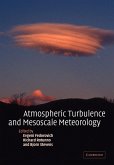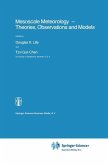Mesoscale weather systems are responsible for numerous natural disasters, such as damaging winds, blizzards and flash flooding. A fundamental understanding of the underlying dynamics involved in these weather systems is essential in forecasting their occurrence. This book provides a systematic approach to this subject, and covers a more complete spectrum of mesoscale dynamics than other texts. The opening chapters introduce the basic equations governing mesoscale weather systems and their approximations. The subsequent chapters cover four major areas of mesoscale dynamics: wave dynamics, moist convection, front dynamics, and mesoscale modelling. This is an ideal book on the subject for researchers in meteorology and atmospheric science. With over 100 problems, and password protected solutions available to instructors at www.cambridge.org/9780521808750, this book could also serve as a textbook for graduate students. Modelling projects, providing hands-on practice for building simple models of stratified fluid flow from a one-dimensional advection equation, are also described.
Hinweis: Dieser Artikel kann nur an eine deutsche Lieferadresse ausgeliefert werden.
Hinweis: Dieser Artikel kann nur an eine deutsche Lieferadresse ausgeliefert werden.








